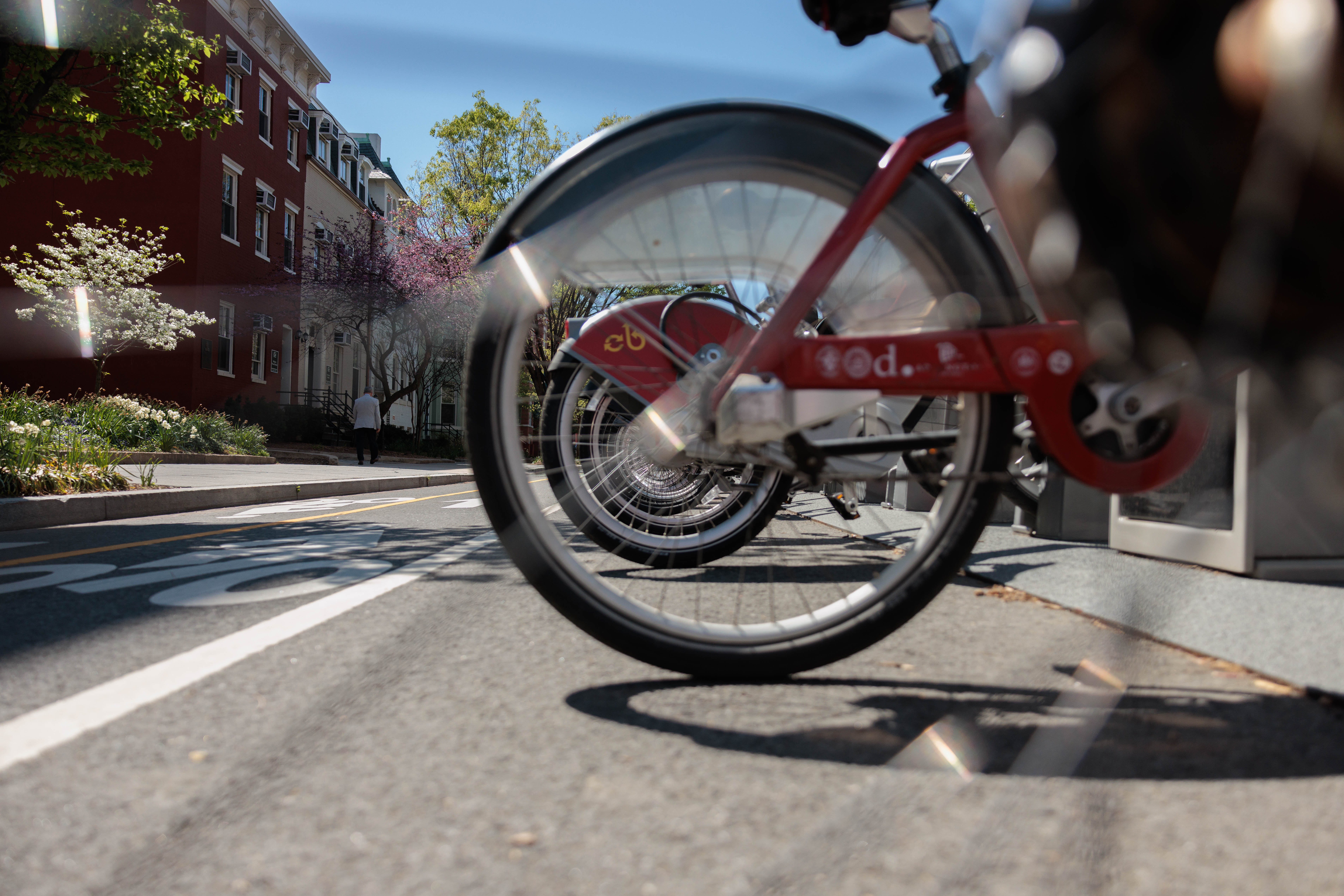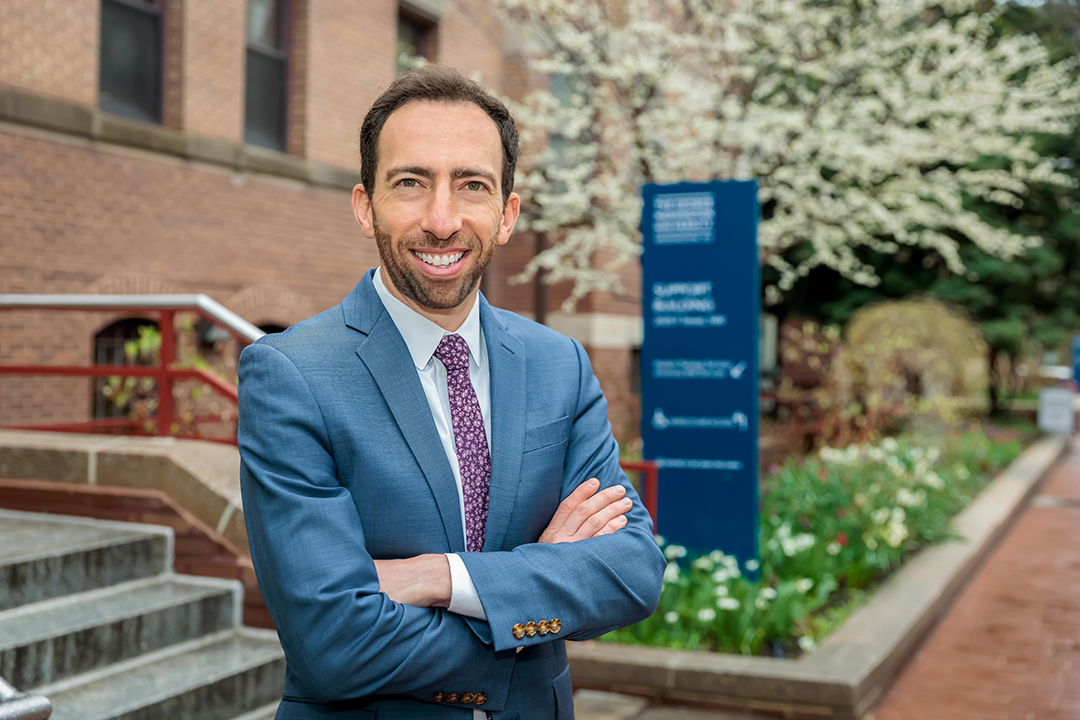A group of George Washington University students passionate about sustainability practices have spent much of the current academic year researching and implementing programs on campus designed to make the school more environmentally friendly.
The first cohort of GW Sustainability Research Fellows brings together students from diverse academic disciplines to engage in a year-long learning, research and action program.
The fellowship is led by Robert W. Orttung, a research professor of international affairs at the Elliot School of International Affairs and the director of research for Sustainable GW. Orttung said Sustainable GW wanted a program that put into practice its research and teachings to make an impact on campus life.
“We think of the campus as a living laboratory,” Orrtung said. “So, this idea is one of our first efforts to create this living laboratory and use our campus as sort of a demonstration site to show how you can do these more sustainable activities, like more composting and having a closer integration with nature as you walk around our urban area.”
To get into the class, the students had to apply detailing what they thought was an important sustainability issue on campus and what academic or personal experiences had prepared them to participate in the program. Ten students were chosen and divided into two groups.
The first group focused their project on campus green space, which evolved to include finding ways to enhance pedestrian safety and campus cohesion.
Matthew Hernandez, a senior studying political science with a public policy focus, said his group started the academic research project by identifying an area many students would like to see improved on campus—more green space. This focus evolved to include finding ways to enhance pedestrian safety and campus cohesion.
In examining areas on campus, the group zeroed in on H Street as a possible opportunity for the development of a woonerf, or a living street.
“The idea behind it is moving toward a shared community space where pedestrians and bikers can feel safer,” Hernandez explained. “It accomplishes that by implementing infrastructure features that are less car-centric, like a permeable pavement and pavement markers that are…indications that it's a pedestrian area.”
Hagan Leeds Richman, a senior studying international affairs, said the process of creating a conceptual design of the woonerf included feedback from community members and outside consultants. The group worked with the Sustainable Urban Planning program to create different renderings of what a woonerf on H Street could look like.
The idea that received the most overwhelming support was to re-imagine H Street as a destination with green space where people can hang out. It would still allow room for cars to pass through.
Alia Jamil, a sophomore studying public health, said the group plans to take their research data and the renderings to present to students at tabling events for added input.
The group even designed a logo for the re-imagined green space, calling it a “GWoonerf” in recognition of the university.
The second group focused on composting because it is one of the biggest ways college students can have an impact on the environment, said Anna Shah, a junior studying international business at the School of Business.
“Sustainability seems like such a big topic to tackle but food waste can have a huge impact, and that's one thing that college students can control. I think we're just trying to empower people that their impact matters and in a very tangible way,” Shah said.
When they conducted focus groups last fall, they realized many people didn’t know how to compost properly.
Hannah Silber, a junior studying public health at the Milken Institute School of Public Health, said the strategy behind their information campaign is to make composting more accessible to GW students. The group has held tabling events across campus, using games to educate students on how to properly compost. They’ve also taken to social media, creating TikToks to meet students where they are and explain in easy-to-understand terms what can and can’t be composted.
“I think the biggest focus of our project is approachability because any sustainable topic in general and composting can be sort of daunting, especially if you don't have the beginning knowledge of it,” Silber said.
Caylee Chan, a junior double majoring in public health and environmental and sustainability sciences, said another way the group is working to make composting more approachable is through a pilot program at the 1959 E Street residence hall.
“It's hard for someone who has never composted before to start,” Chan said. “That’s one of the things we’re trying to address in our pilot program. We provided all the residents with compost bins. They fill it and during the collection, they leave it outside their doors on Mondays and Fridays. Then one of us comes around with one of the larger compost bins located outside of SecreTea and just empties the individual bins into the larger one.”
Chan said breaking down accessibility barriers and making the composting process easier for students will increase how many people compost on campus.
Orttung said he is impressed with how his students, all coming from different disciplines, have worked together to implement such beneficial initiatives on campus.
“What they’ve done has more than met my expectation,” Orrtung said. “Everyone is engaged and that's what's interesting is, this is something that they want to do. So, I think by having the students define what the project is and then figuring out how to solve the problem that they've identified, it encourages good collaboration and participation.”




